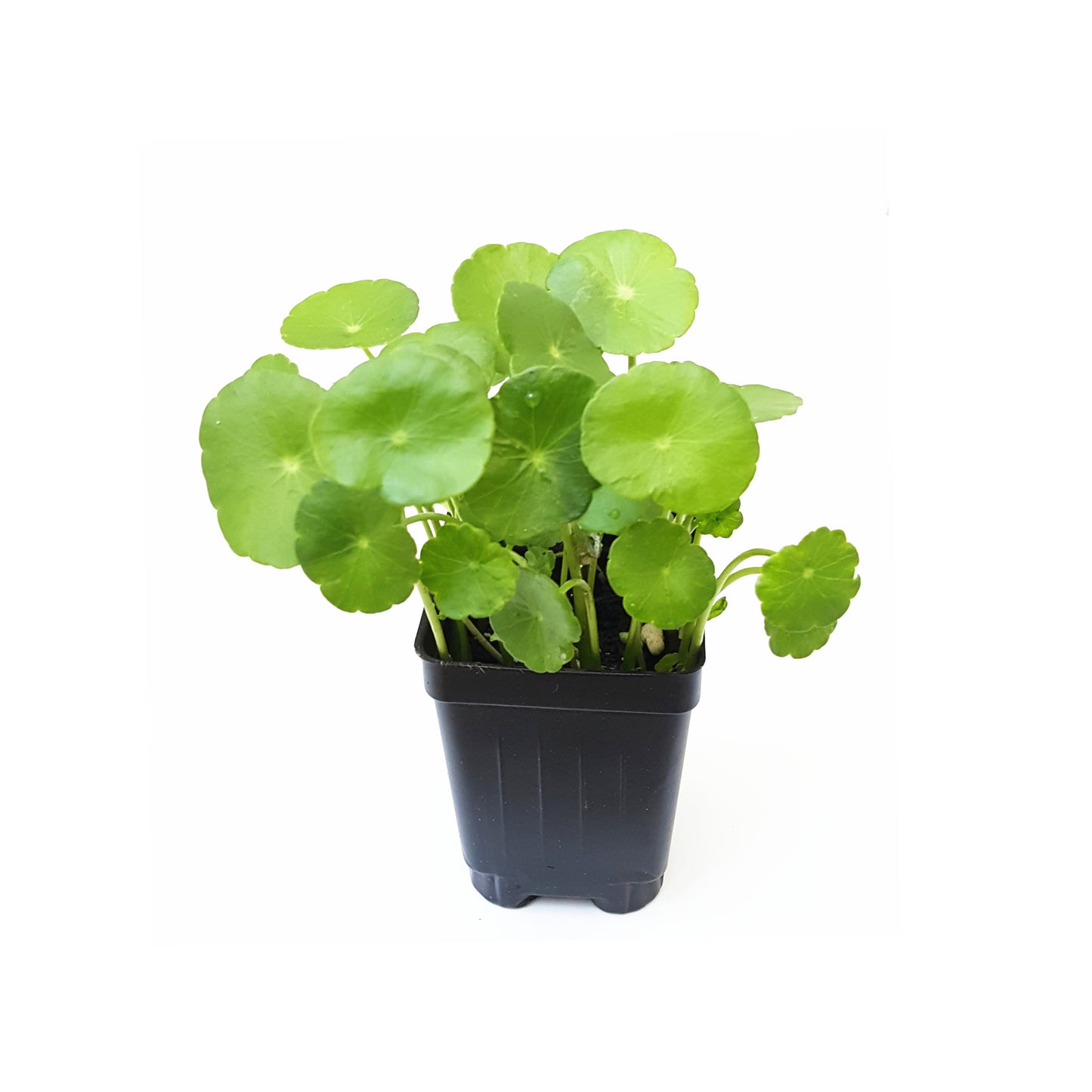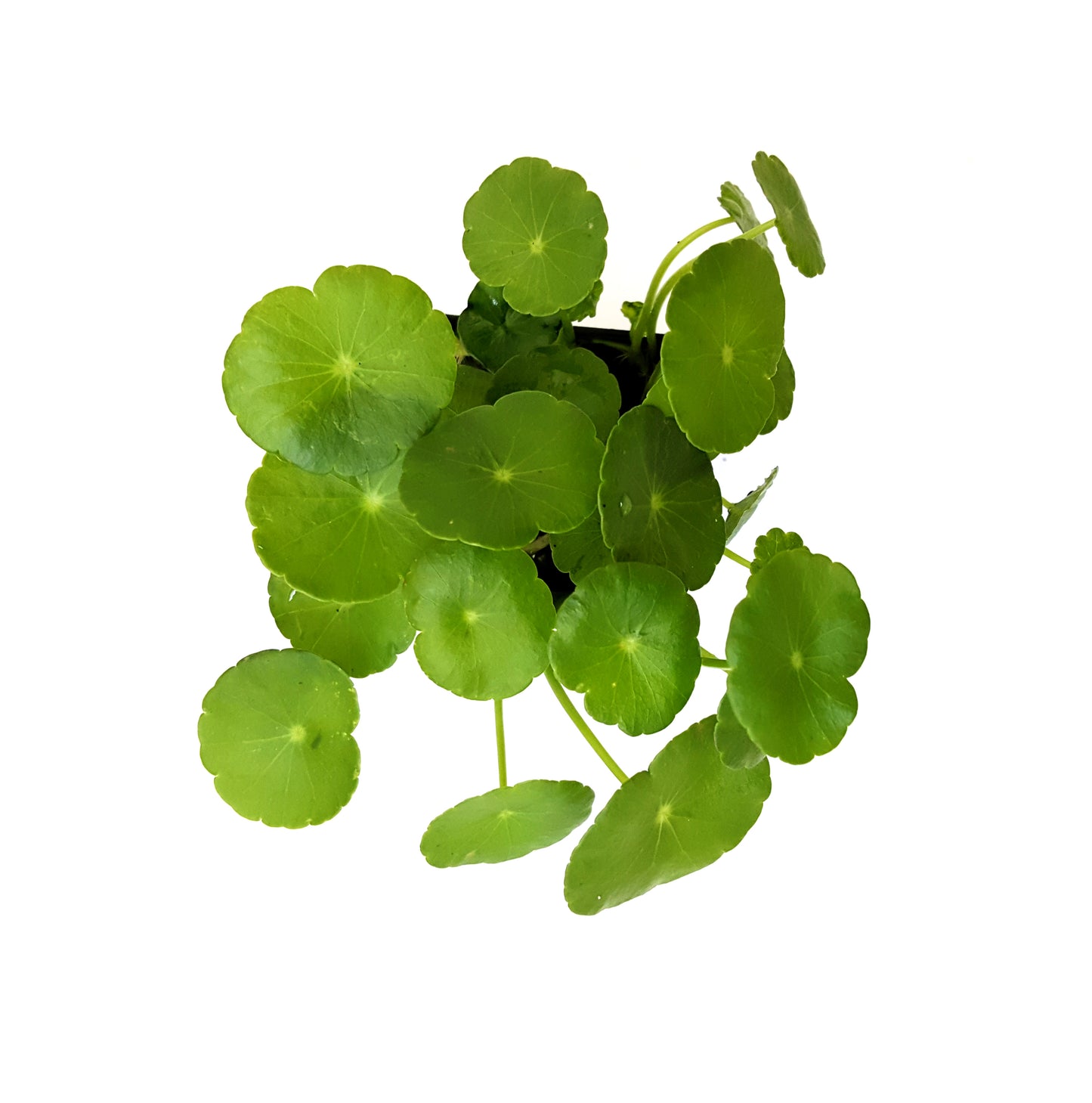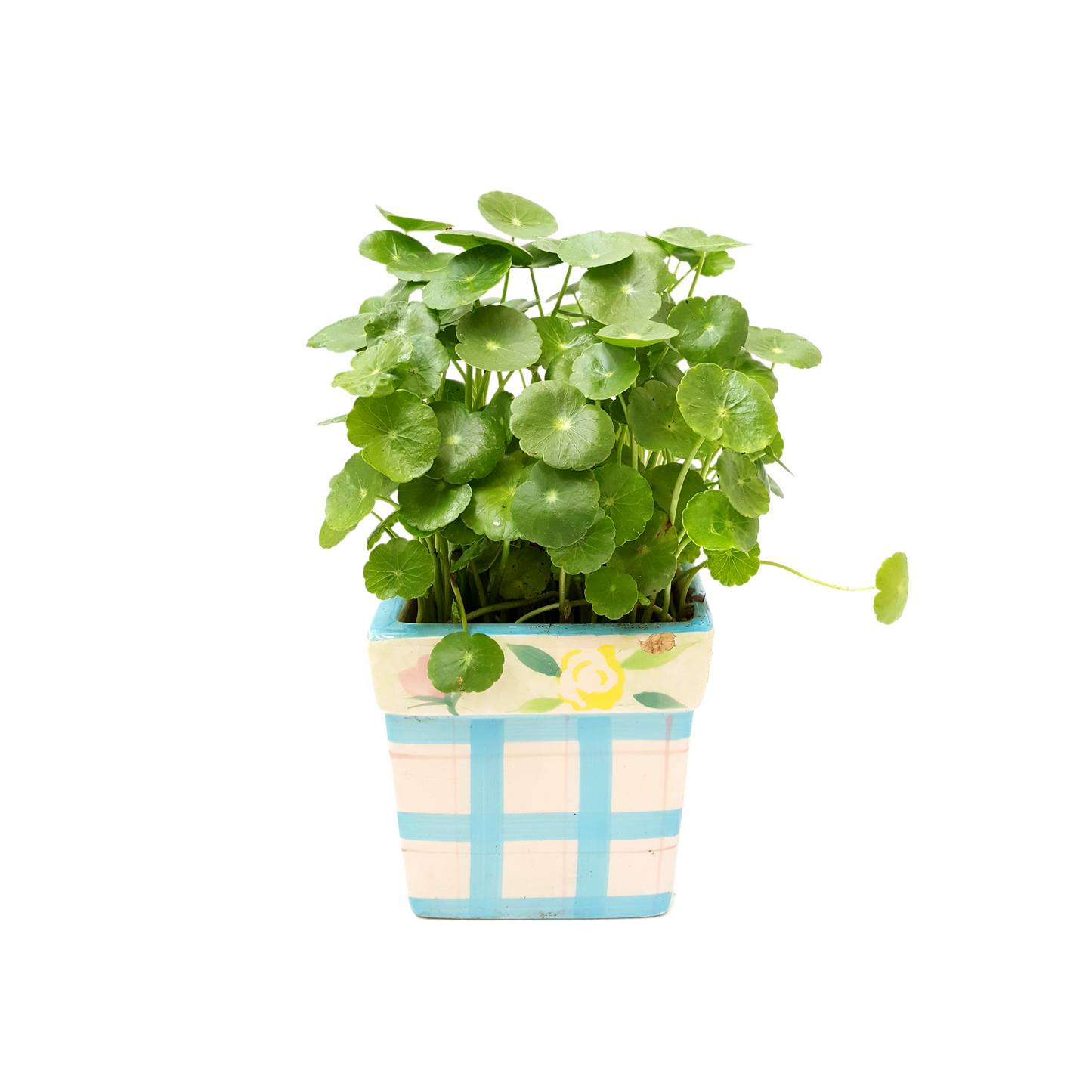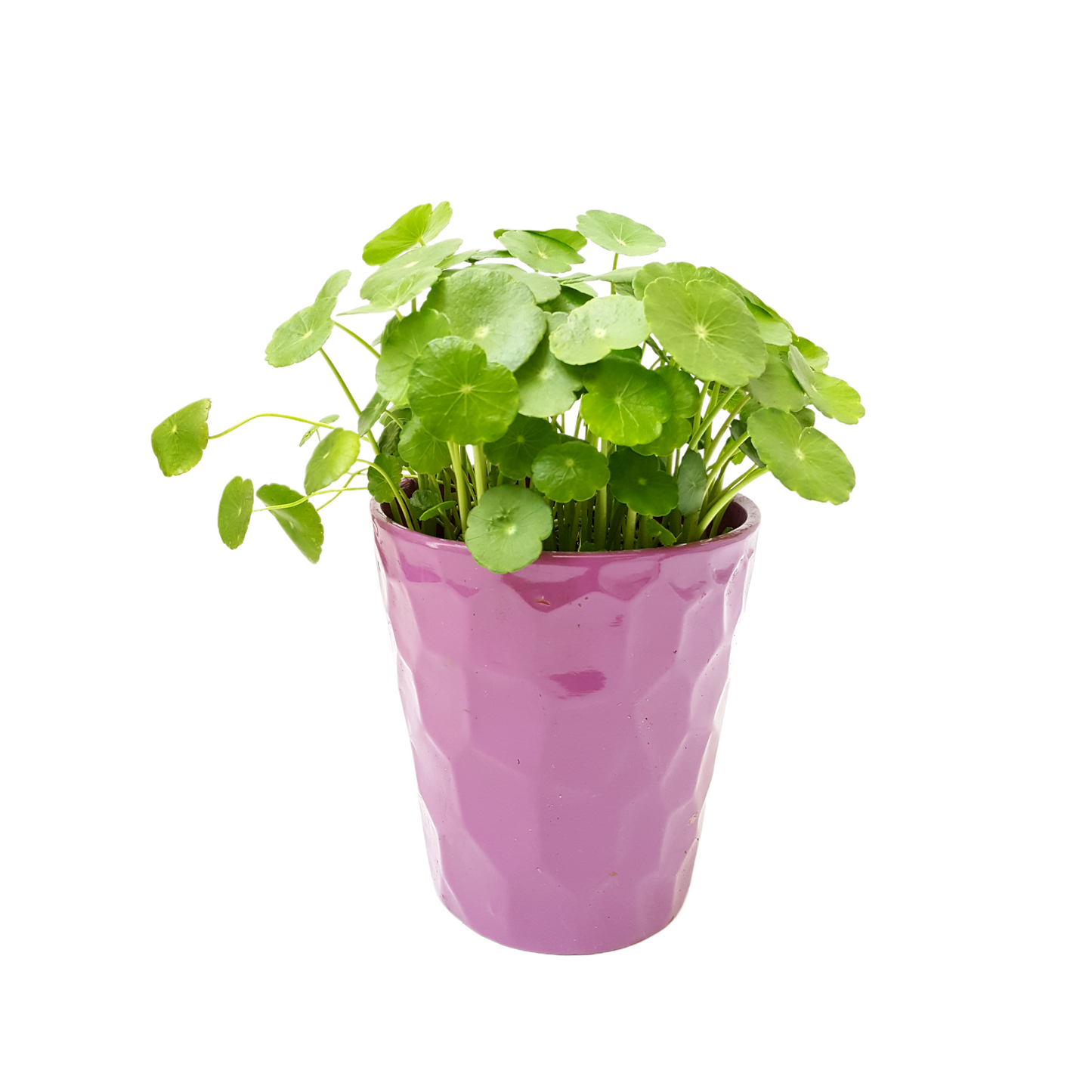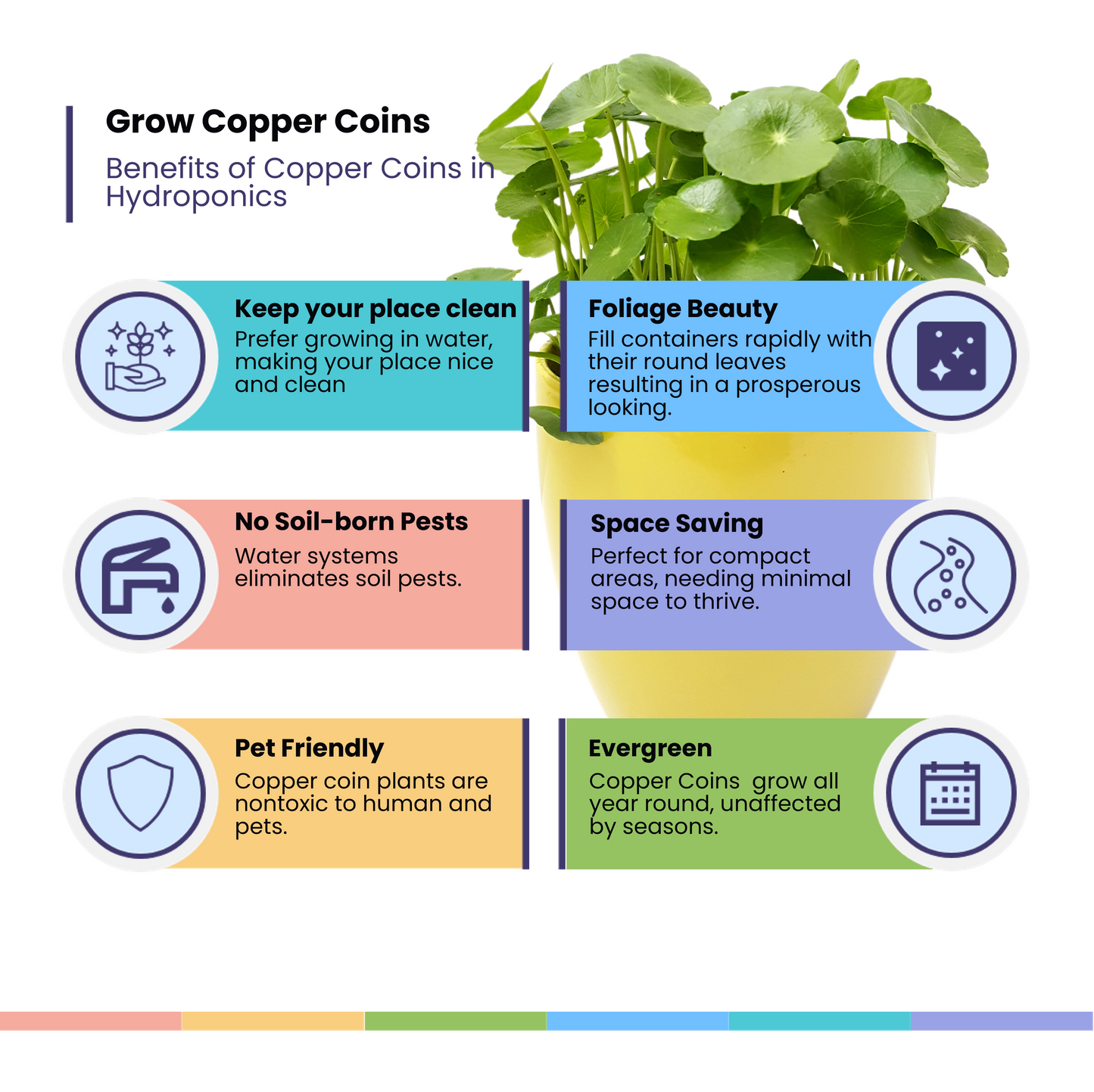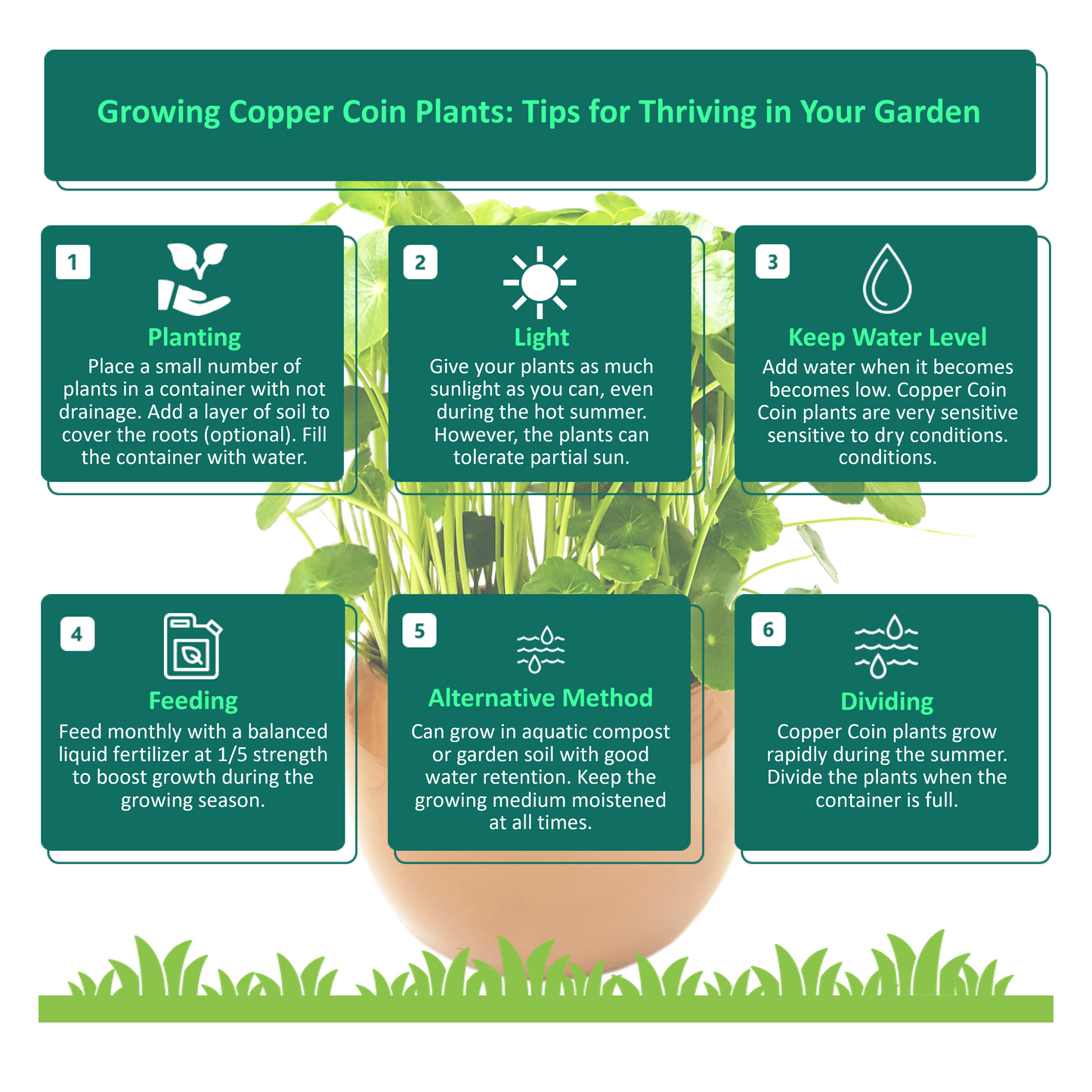Wonderland Flora
Copper Coin Plant, Hydrocotyle vulgaris, Lucky Plant, Money Plant, Marsh Pennywort, Pet Safe - 3-inch Nursery Pot
Copper Coin Plant, Hydrocotyle vulgaris, Lucky Plant, Money Plant, Marsh Pennywort, Pet Safe - 3-inch Nursery Pot
Couldn't load pickup availability
What you will get:
You will receive copper coin plants growing in a 2.5" pot with soil but sitting in water (Photos 3 and 4).
Once you receive your order, plant the plants into a larger pot without draining holes by adding some regular potting soil to cover the roots. Add water slowly to let it overflow to rinse out the floating soil debris on the water surface. Keep the soil surface always submerged and let the plant have as much direct sunlight as you can. Grow lights also work fine.
Description
Copper coin (Hydrocotyle vulgaris) has common names of lucky plant, money plant, marsh pennywort, common pennywort and water naval, and is a perennial herbaceous plant which likes aquatic environment and very easy to grow. It can be either a house plant or a water garden/pond-side plant.
Fun points
1. Decorative. Copper coin is a clumped evergreen plant. When grown as a house plant in a nice-looking pot, it can be very eye-catching, novel and fresh.
2. Nice and clean. Although copper coin plants thrive when their roots are covered with mud, the mud is under water may become settled as time goes. Therefore, the entire device is clean and free of insects and disease. Copper coins can also be grown without soil and fed with aquatic fertilizers.
3. Symbolizing wealth and lucky. Copper coin is a type of ancient money. Copper coin plants symbolize wealth and prosperity in business and life. The round shape of their leaves symbolizes smooth, harmony, peace and success - all as ways to being lucky.
4. As an aquatic plant. Copper coin can be grown in a fish tank or other mini-aquariums.
5. As an edge plant. Copper coin can be planted along pond side or in a water garden.
6. Edible. It says that when cooked, copper coins are tasty with a carroty and bit bitter taste. However, it should not be taken in quantity.
7. Very cold hardy and nerve die. The leaves and stems of copper coin plants are very cold hardy and can survive from a low temperature around the freezing point (32°F or 0°C). Some of the stems and leaves may be killed when subject to a temperature as low as 20°F (-6.7°C) . However, some of the stems and leaves may remain green. More importantly, their roots in soil submerged with water may revive shortly after moving to a warm location or when the weather becomes warm.
Care tips
Although copper coins are very easy to grow, thrive under full sun and tolerate full shade, aquatically or in soil, the following tips may be helpful for healthy copper coin plants.
1. Soil and water. The plants like water-submerged soil rich in humus. They may also grow well in moist soil on the ground.
2. Light. Copper coins thrive under the full sun even during the hot summer and winter when the day time is very short. Under bright indirect light, plants tend to be leggy with nonuniform heights.
3. Temperature. Copper coins like hot weather but may also grow very well if the temperature is above 60°F. As mentioned above, they may survive a low temperature down to 20°F (-6.7°C) but some stems and leaves may be killed with some leaves remain green and viable roots.
4. Feeding. Copper coin is a leafy plant and is mostly in vegetative growth. With enough nutrition, copper coin leaves are larger and in dark green. Diluted soluble house plant food (1/4 to 1/3 strength of that for regular potted house plants) can be used for fast supply. Controlled slow release fertilizer may be used for long-term feeding.
Read our Shipping Policy and Return Policy.
Share
